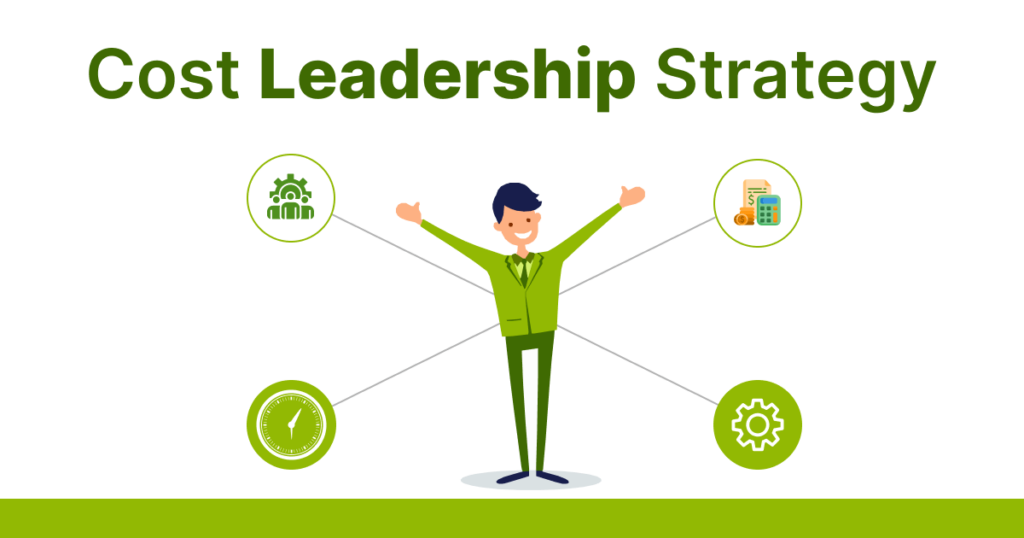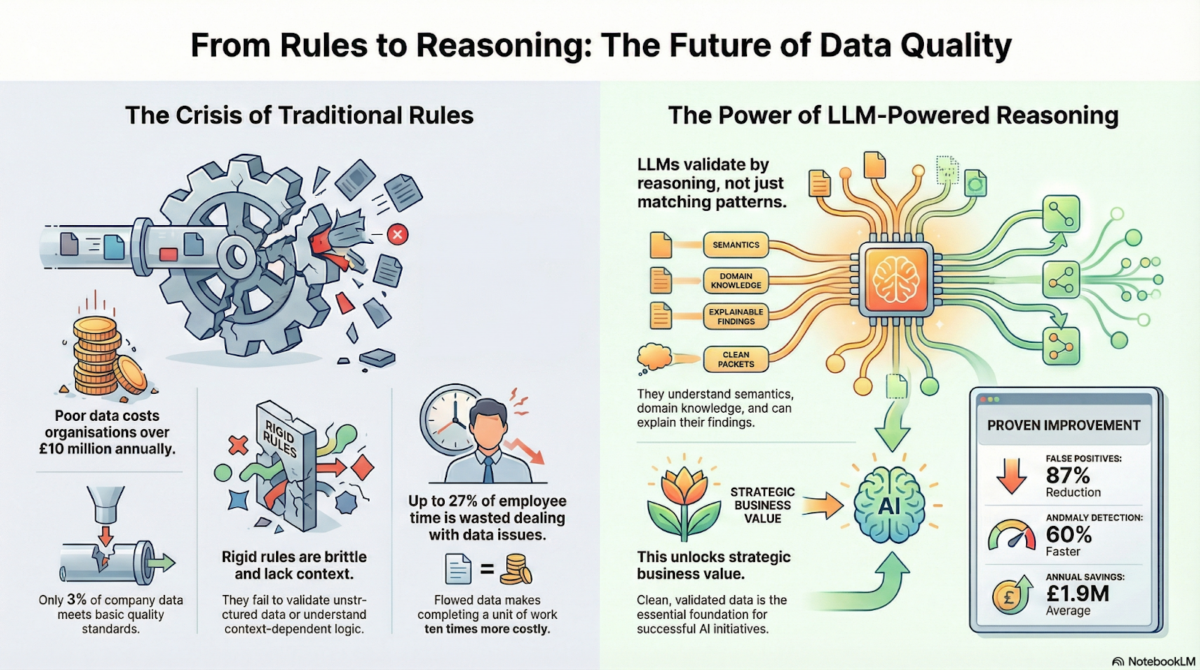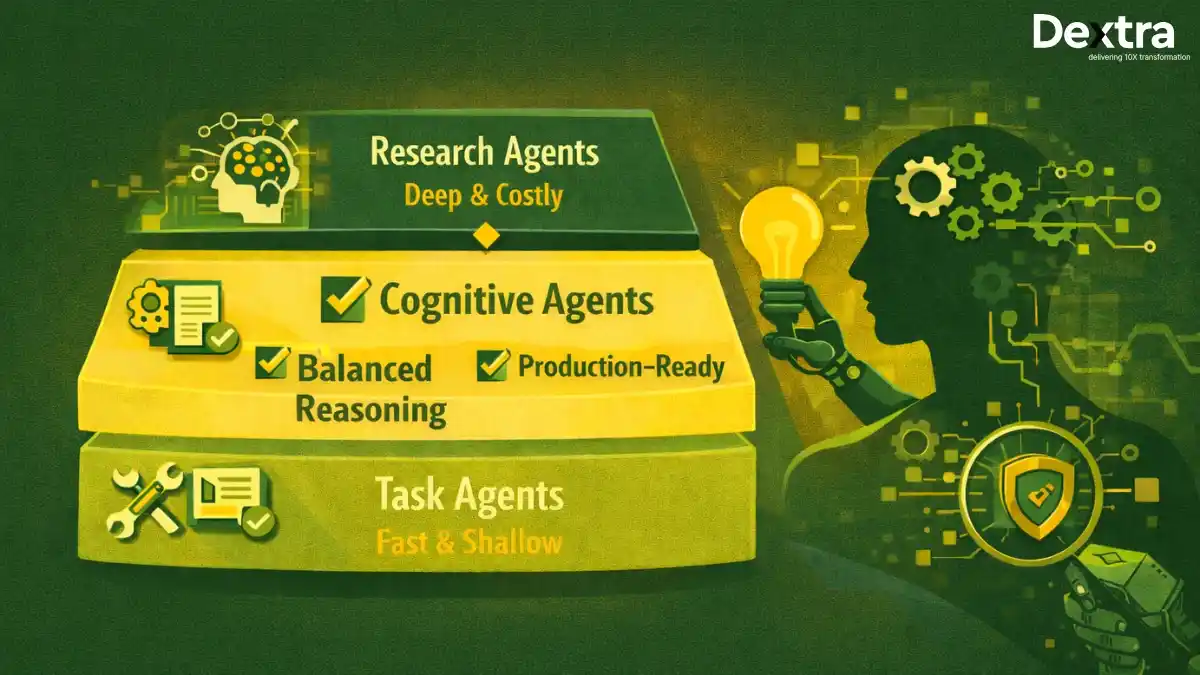Struggling to stay profitable while keeping prices low? In a highly competitive market, many businesses face the challenge of offering affordable products without sacrificing their bottom line. The pressure to cut costs while staying ahead of rivals can feel like a constant uphill battle.
That’s where the cost leadership strategy comes in.
It’s a smart, proven approach that helps companies become the lowest-cost producers in their industry—giving them the edge to offer better pricing or enjoy higher profit margins. Brands like Walmart and McDonald’s have mastered this strategy to dominate their markets.
In this guide, we’ll break down what cost leadership really means, share real-world examples, and highlight the key benefits that can transform your business strategy.
What Is Cost Leadership?
Cost leadership is a strategy in a business in which a company aims to be the lowest-cost producer. This strategy focuses on lowering manufacturing and operational costs through lean processes, and creative cost-cutting strategies.
Lowering expenses helps the company to offer its products or services at a competitive price. This attracts price-sensitive customers and increases market share. Cost leadership tries to give the best value at the lowest feasible cost, unlike other strategies that focus on product differentiation or premium pricing.
Companies such as Walmart, McDonald’s, and IKEA are well-known for successfully executing cost leadership. They use large-scale operations and cost-effective manufacturing methods to keep prices down while being profitable. However, maintaining cost effectiveness while preserving product quality and innovation needs ongoing feedback and information.
Also Read:- Digitalization Strategy
10 Great Benefits of Cost Leadership Strategy
The key benefits of this strategy are larger profit margins and a big competitive edge. Here are some other benefits of leadership cost strategy:
1) Increased Market Share
Lower pricing helps a company attract more clients, which increases sales volumes. This expanding customer base can boost the company’s market position. As more customers choose the less expensive option, the company can strengthen its position against competitors.
2) Customer Loyalty
Lower costs can increase customer satisfaction because buyers believe they receive good value for their money. Satisfied clients are more likely to return, which results in a loyal customer base. Over time, this devotion can result in word-of-mouth recommendations, which increases the company’s reach.
3) Higher Profit Margins
Even at lower pricing, a cost leadership approach can increase profit margins by lowering operational costs. These savings are made possible by efficient processes and economies of scale. Higher margins give the organization more money to invest in innovation and growth. Many businesses turn to tech-driven business solutions to improve profitability by reducing operational costs and enabling smarter vendor negotiations through better data visibility.
4) Competitive Advantage
Being the lowest-cost producer gives a company a competitive advantage which makes it difficult for competitors to match costs while maintaining profits. This advantage can discourage new participants from entering the market. It also helps the company to withstand pricing wars and economic downturns better than its competitors.
5) Price Flexibility
Lower production costs help a company to more easily adapt its pricing strategies in response to market changes. It can cut prices to push away competitors or temporarily raise them to maximize profits. Pricing flexibility can be important in responding to changing market conditions and customer preferences. Leveraging modern AI productivity tools can further enhance cost leadership efforts by automating repetitive tasks, streamlining workflows, and improving employee output with fewer resources.
6) Enhanced Bargaining Power With Suppliers
Due to its cost leadership strategy, a company that produces in large quantities can negotiate better terms with suppliers. Bulk purchases can result in discounts and favorable terms that further bring down the prices. This increased bargaining power helps ensure a stable supply chain and cheap production costs.
7) Improved Efficiency and Innovation
Focusing on cost reduction results in adopting successful processes and innovative solutions. Companies are constantly looking for new methods to reduce operations which leads to increased productivity. These inventions can have long-term benefits and keep the organization ahead of its competitors. Also, Companies implementing a cost leadership strategy often rely on thorough technology due diligence to uncover inefficiencies in their tech stack, helping reduce operational overhead and support scalable innovation.
8) Resilience During Economic Downturns
Cost leaders are better positioned to withstand economic downturns because they can remain profitable even when prices fall. Their low-cost structure helps them to continue operating and keep clients while competitors struggle. This endurance helps businesses with continuity and stability in difficult times.
9) A Stronger Position in Negotiations With Buyers
Companies with the lowest expenses can offer lower pricing while maintaining profitability. This gives them an advantage in discussions with buyers. This advantage can result in long-term contracts and partnerships with key customers. Secure and consistent partnerships with buyers help to keep revenue sources.
10) Scalability & Expansion Opportunities
Cost leadership means creating scalable business models that can be duplicated in new areas. This scalability helps with easier and more cost-effective growth into new geographic areas or product categories. The ability to expand efficiently promotes long-term growth and expansion.
10 Disadvantages of Cost Leadership:
Here are some disadvantages of cost leadership strategy:
1) Risk of Quality Reduction
Focusing solely on cost reduction can result in lower product or service quality. If quality deteriorates dramatically, customer satisfaction and brand reputation can suffer. This can lead to client loss and a reduction in market share over time as customers seek higher-quality alternatives.
2) Limited Flexibility and Innovation
A tight cost leadership strategy prioritizes efficiency above innovation. This focus can prevent innovation and limit the company’s capacity to respond to changing market conditions or customer preferences. As a result, the company can fail to adapt to new trends or technical advances, putting it at a competitive disadvantage.
3) Vulnerability to Price Wars
Being a cost leader can render a company vulnerable to competitors’ aggressive price initiatives. Price wars can reduce corporate margins and strain financial resources. In severe circumstances, protracted price rivalry can destroy the company’s sustainability and long-term existence.
4) Employee Morale and Retention Issues
Efforts to cut costs can result in lower pay, fewer benefits, and less investment in employee development. These issues can hurt staff morale and job satisfaction. High turnover rates and challenges in attracting excellent staff can harm the company’s productivity and performance.
5) Dependence on High Sales Volume
Cost leadership relies on maintaining high sales volumes to stay profitable. This reliance can be problematic if market demand falls or the company’s supply chain fails. A rapid decline in sales can have an impact on financial stability which makes it difficult to fund fixed expenditures while remaining operational.
6) Overemphasis on Cost Reduction
A lot of emphasis on cost-cutting can lead to short-term thinking and neglect of long-term expenditures. Important areas, such as research and development and customer service, do not receive enough attention or investment. This can harm the company’s ability to innovate and grow sustainably over time.
7) Customer Perception
A company recognized primarily for its low prices can be seen as giving lower-quality products or services. This idea can turn off potential customers who connect low prices with poor quality. Overcoming this judgment needs greater effort and investment in brand positioning and customer education.
8) Supplier Dependence
Relying on cost-effective suppliers to keep manufacturing costs low can lead to dependency and vulnerability. If a key supplier raises its pricing or goes out of business, the company’s cost structure can be considerably affected. Identifying new suppliers and renegotiating conditions can be time-consuming and costly.
9) Difficulty Differentiating
A cost leadership approach needs consistency and minimal difference. This makes it difficult to differentiate the company’s products or services from those of competitors. In areas where differentiation is important, the organization can struggle to attract clients looking for distinctive features or experiences.
10) Regulatory and Compliance Risks
Aggressive cost-cutting initiatives can usually result in non-compliance with legislation and standards. Cutting corners in areas such as safety or environmental rules can lead to legal troubles and reputational damage. Making sure that there is compliance while keeping expenses low needs careful consideration and oversight.
8 Cost Leadership Strategy Examples:
Here are some big companies that use cost leadership strategy:
1) Walmart
Walmart is a great example of a company using effective cost-leadership strategies. Walmart can expand its collection of products at consistently low costs due to its massive scale and cost control techniques. Its emphasis on keeping costs low while increasing operating efficiency helps it to get a big customer base.
2) McDonald’s
McDonald’s employs cost leadership by defining its menu and optimizing its operations to cut expenses. The company benefits from economies of scale and effective training programs. This strategy allows McDonald’s to give affordable meals worldwide while having profitability and a strong market presence.
3) IKEA
IKEA shows cost leadership by producing flat-pack furniture that saves on shipping and storage costs. The company also focuses on manufacturing procedures and self-service retail operations. These tactics help IKEA to give fashionable and functional home goods at cheaper prices, which makes them more accessible to a bigger client base.
4) Southwest Airlines
Southwest Airlines pursues a cost-cutting approach by using a single aircraft model which lowers maintenance and training costs. It also uses minor airports to reduce landing fees and prioritizes point-to-point flights for increased efficiency. These techniques allow Southwest to provide reasonable fares and attract budget-conscious passengers.
5) Aldi
Aldi is a bargain supermarket operator prioritizing cost leadership by giving a straightforward shopping experience. The company reduces overhead by supplying a small number of private-label products which lowers labor costs. This strategy allows Aldi to maintain low pricing while appealing to budget-conscious customers.
6) Ryanair
Ryanair is a low-cost airline that pursues a cost leadership strategy by reducing operating expenses throughout its operations. The airline operates a single kind of aircraft to decrease maintenance costs and maximize aircraft utilization with rapid turnaround times. Ryanair can give some of the industry’s lowest tickets by keeping costs extremely low. This attracts all price-sensitive customers.
7) Costco
Costco has a cost leadership strategy that focuses on bulk sales and a membership model. Costco gets economies of scale by selling large volumes of things while keeping a limited number of goods. The membership fees of Costco generate a consistent cash stream which allows Costco to give reduced rates on high-quality products and get a loyal customer base.
8) Dollar Tree
Dollar Tree shows cost leadership by selling a lot of things for $1 or less. The company does this by getting low-cost goods and opening in small and uncomplicated locations. This strategy helps Dollar Tree to appeal to budget-conscious customers while having a competitive advantage in the discount retail sector.
The Simple Difference Between Price Leadership and Cost Leadership
Cost leadership and price leadership strategies are similar to each other but they differ in their primary focus and execution in a business environment. The cost leadership strategy focuses on becoming the lowest-cost producer in an industry. This method helps businesses get high profit margins despite selling products at competitive prices.
A pricing leadership strategy tries to create the market price for goods or services by being the first to cut prices in a competitive context. Companies that use this method leverage their market position and financial strength to influence pricing patterns which causes competitors to follow suit.
Price leadership aims to increase market share by recruiting price-sensitive clients while creating barriers for newcomers. Amazon is a famous example of a company that sets cheap prices to gain market share and push competitors away.
Conclusion
Adopting a cost leadership strategy empowers companies to offer competitive pricing while maximizing profitability. Industry giants like Walmart and IKEA have proven the success of this approach by streamlining operations and leveraging economies of scale.
However, cost leadership isn’t without challenges, from potential quality trade-offs to limited innovation. That’s why it’s crucial to implement this strategy with precision and insight.
At Dextralabs, we help businesses navigate the complexities of cost leadership by leveraging data-driven strategies, operational optimization, and scalable solutions. Whether you’re looking to boost margins or expand market share, our expertise ensures you stay competitive without compromising quality.
Unlock your competitive edge with smart, sustainable cost leadership—powered by Dextralabs.
FAQs on Cost Leadership Strategy:
Q. Why Is a Cost Leadership Approach Important?
The cost leadership strategy is important because it helps businesses to create items at a lower cost and sell them at a lower price than competitors which gives a competitive advantage.
Q. What Is the Primary Goal of a Cost Leadership Strategy?
The cost leadership approach is a business plan that focuses on lowering production costs and giving the most affordable products in order to beat competitors and get market dominance.
Q. What Is a Real-World Example of Cost Leadership?
Walmart is one of the most well-known cost leader by using a huge supplier network, which helps them to purchase products in bulk at lower prices than competitors.








